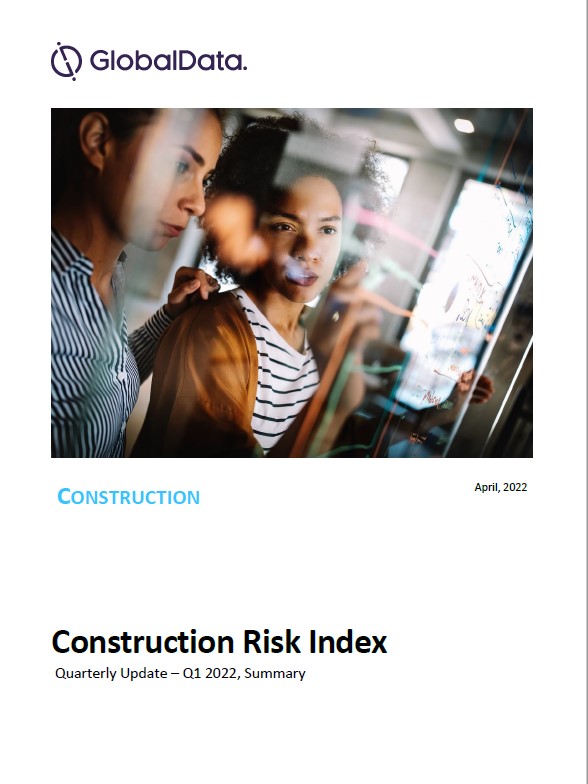Technology is paramount when it comes to managing construction projects today. The days of sharing cumbersome hard copy, spreadsheets and blueprints have long passed and been replaced by cutting-edge software and services.
The slogan here is ‘the simpler, the better’ and in times of persistently rising material costs the use of modern construction management software can be the crucial factor for the viability of a project.
Undoubtedly, the rise of the internet has made the overall planning, coordination and control of projects from inception to completion easier than ever before.
Yet, sharing and connecting individual documents and files is not always as straightforward as it might seem, and projects planners can quickly feel overwhelmed by the sheer infiniteness of numbers, data and documents.
Management software can help ease the burden and simplify work relationships between project owners, architects, designers, construction engineers and other contractors.
How well do you really know your competitors?
Access the most comprehensive Company Profiles on the market, powered by GlobalData. Save hours of research. Gain competitive edge.

Thank you!
Your download email will arrive shortly
Not ready to buy yet? Download a free sample
We are confident about the unique quality of our Company Profiles. However, we want you to make the most beneficial decision for your business, so we offer a free sample that you can download by submitting the below form
By GlobalDataSee Also:
Moreover, advances in mobile and workflow technologies and the trend towards ever more connected data draws a vision of every single design project completed on time and under budget.
Moving on from spreadsheets
"The biggest complaint of owners is that at the end of the job they get surprised that the cost of the project is a lot more than it was promised to them," said e-Builder founder and CEO Jonathan Antevy.
The capital programme and project management software provider is one of the leaders in the construction software-as-a-service application sector. "We’re giving them transparency, visibility and a high degree of accountability."
The company promises its clients a programme that enables complete project management and audit through internal controls, accurate recordkeeping, contract administration and change management methodologies.
According to the company, one key feature of web-based construction management software is the improved cost and scheduled risk management, which can lead to improved decision-making on the back of a history of previous projects.
The complete visibility of project information and communications is another element of the software, together with process automation, which helps reduce project costs by improving efficiencies and reducing risks and claims. Today’s systems also include several reporting tools for total visibility regarding outstanding action items and provide document controls.
"At the end of the day, the software is like a radar," explained Antevy. "I can see into the future, I can see into the past, I can see what’s happening in real-time and I can forecast where my job is going to be. It’s a forward-looking system and builders can be proactive rather than reactive."
According to Antevy, another significant characteristic of the software is its collaborative environment, improving the work relationship within the team.
New information can be updated in real-time, which means everyone has the knowledge of the status of a project and mistakes can be spotted at an early stage "when it’s still a small problem."
A new mobile era
Mobility is a catchword that has also entered the field of construction management software, with mobile devices such as tablets and smart phones emerging as powerful tools for construction.
In June 2011, e-Builder launched its first edition of a new mobile app for the iPad, providing access to plans, drawings and other documents straight from the field.
The app fully integrates with the software and processes can be ‘mobile enabled’, helping the construction team to document results of site inspections, create project issues and attach photos in real-time. The biggest advantage perhaps is that results can be communicated faster and more accurate, plus duplicate entries are completely avoided.
"The introduction of the app has made it so easy to use the software. Mobile is going to be big," said Antevy. "The first headline for future improvements of our software is mobile applications all the way. Access the software anywhere you are and work in real-time."
Now in January 2012, e-Builder will launch a software app for the iPhone and one for the Android will follow suit later in the year.
However, opening up construction software to different mobile devices increases demands on data security and safety as risks grow substantially with the use of wireless networks.
Jonathan Antevy however still promises the uppermost data security is available for clients: "We’re covered by a technical audit, which makes sure we have the highest level of security.
"A lot of our clients are governments and city councils and because of that even the smallest client gets the highest security level available. There’s no difference to the security system that the banking industry uses for online banking and ours."
Back to the basics
All new and exciting workflow and mobile developments aside, going back to the basics can be a huge advantage for constructors.
Talking to Constructech Magazine in early January 2012, BuilderMT president Tom Gebes explained that the changing market throughout the past few years has forced builders to reset the way in which they think about business.
Concentrating on having the right systems for scheduling, accounting, sales and other management tasks in place could therefore be the key to profitable construction projects and be a huge advantage in the current economical environment.
Technology which caters to the basic needs of builders can therefore play a crucial role. While many builders are concentrating on initiatives such as 4D modelling and building information modelling (BIM), Gebes believes that only the right basic functionalities will help builders go through the next years without making considerable profit losses.
Jonathan Antevy agrees with this notion and says the best results can be gained through tailored management systems. "A lot of our initial work goes into defining the best way to manage a process for a client. What type of reports are they going to have, what’s the best way to get approval through the system? That’s where we spend most of our time and effort."
The implementation of a good basic management system does not eliminate the adoption of new modelling technologies such as BIM, as Antevy explained: "Architects have to share their modelling software with all the sub-contractors, the mechanical and electrical engineer, and others who all have to contribute to the model.
"They need to send their models to let’s say 15 different consultants and they all need to update their proportion of the model and send it back to the architect.
"Construction management software facilitates the coordination of building information models and that’s actually the best part of the software, we facilitate the coordination and dissemination of all those BIM files."
Unleashing the potential of connected data
Today, most construction professionals rely on their experience. However, with constantly better versions of construction management software being released on the market, software providers would like to see the field develop towards more interconnectivity, with all of the world’s data organised and easily accessible in one outlet – opening up the opportunity to make the best possible decision for every single project.
The key to best practice, or in other words the data, is already available today, but it is not easily accessible. Throughout all fields, including the construction industry, information is available in different databases, journals and books. The only problem is it is neither organised nor arranged in one common language, as e-Builder president Ron Antevy writes in an article in the Construction Executive Magazine published in October 2011.
However, if all available data ever collected in the construction industry could be arranged in a standard format and made available to every member of the design-build and construction industry, work life would be radically transformed. Builders would have the potential to significantly reduce costs without impacting the scope or schedule of a project – the opportunities and benefits seem unimaginable.
According to Jonathan Antevy, the first step towards the connected data concept has already been made with the implementation of a builder’s project management software as it contains valuable historical cost and vendor data. "Connected data is making all of us smarter and we are able to make decisions much quicker and better," he said.
To date however, this vision remains a dream with software developers rather concentrating on improving ease of use, simplifying work steps as well as data entry – it’s no surprise that construction management software is seen as the first step to interconnectivity in the industry.








